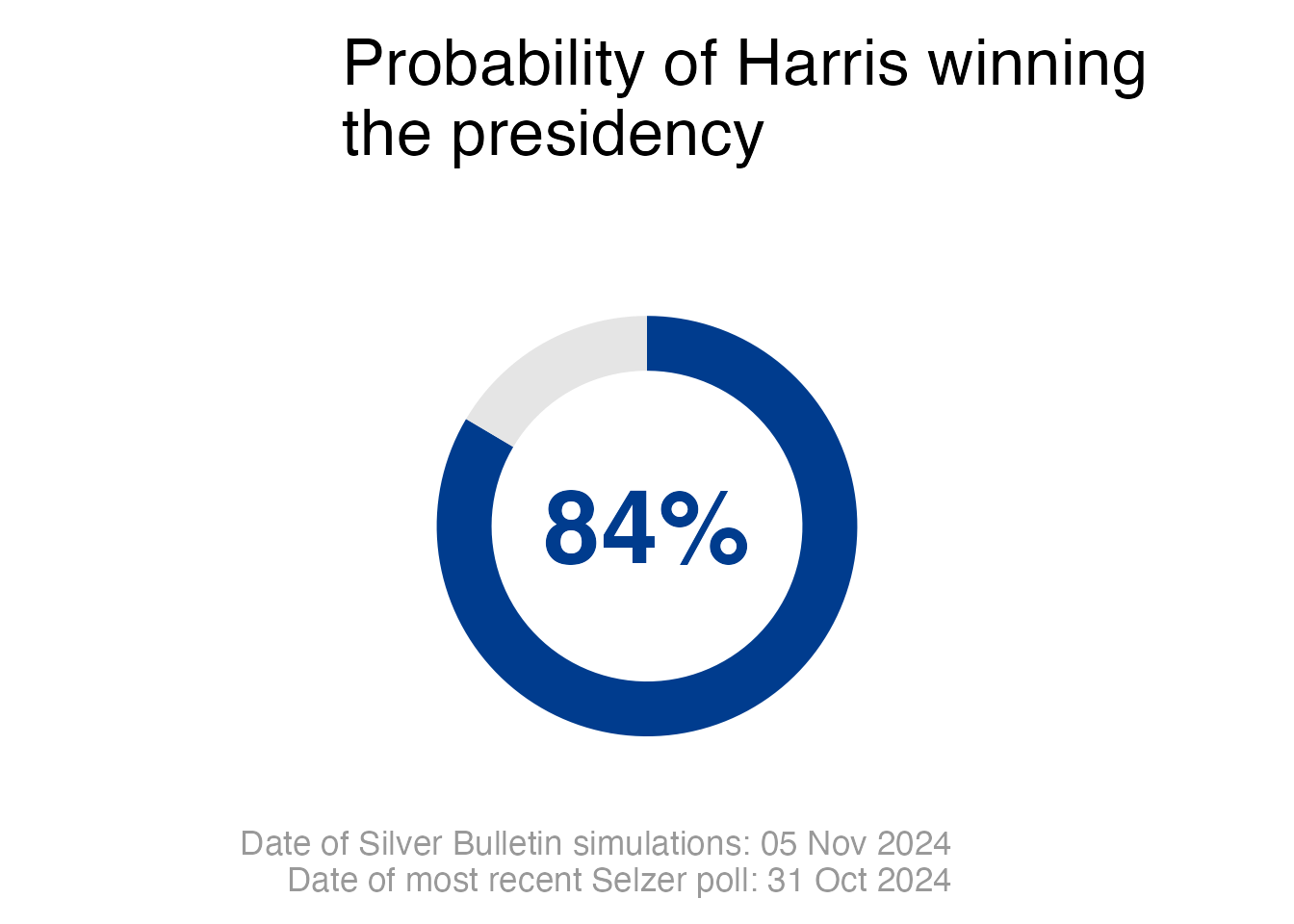As I write this, it’s 2 days before the 2024 election, and Ann Selzer has just thrown certain odd sectors of the internet into chaos with her final pre-election poll showing Kamala Harris ahead(!) of Donald Trump in Iowa, 47-44. I hadn’t planned on running the Selzer+Silver model this year, because I haven’t been able to find any individual simulation draws from either new 538 (under G. Elliot Morris, formerly of the Economist) or Silver Bulletin (under Nate Silver, formerly of old 538) and because it gave exactly the same results as old 538 for the 2022 election.
But, given that Selzer’s final poll shows Harris up by 3 in Iowa while Silver Bulletin shows her down by 5, it seems worthwhile to figure out how to run the model this year and put our hypothesis that Ann Selzer is better at election forecasting than Nate Silver to the test once more.
Since we don’t have the raw simulation draws this year I’ve had to do some reverse engineering. While that shouldn’t make things any worse given how insane this election model is to begin with, it does increase the likelihood that I made a dumb error somewhere along the way. I took the distribution of vote share in the 7 key swing states + Iowa from Nate Silver’s model (note that you’ll need a subscription to access these links), and used that to fit a Student’s t-distribution for the Republican 2-party vote share in each state. Then I combined that with the correlation matrix Silver just published in his analysis of the final Selzer poll and used that to calculate the covariance matrix between these 8 states. That let me simulate my own simulation draws using a multivariate t-distribution. Finally, I took the “Harris win probability column” from Nate’s table of The 128 paths to victory and used that to extrapolate from the 8 states I have data for to the whole country. After that, it’s identical to the 2022 version, where we weight each of the simulated outcomes based on how closely it matches the Selzer poll result. If for some reason you want to replicate this cursed thing, the code for the 2024 version is on GitHub. It’s even more half-baked than last time, because I’m writing this 2 days before the election and it’s not worth it to clean it up or make it fully automated.
That’s enough throat-clearing. Here’s what the model says:
 That’s right. Unlike all the other models and polling firms who say the election is “too close to call” or “teetering on a knife’s edge” or “the closest election of my lifetime”, our model says Harris is a strong favorite to win the presidency. She has better odds than Clinton did in 2016, and worse odds than Biden had in 2020.
That’s right. Unlike all the other models and polling firms who say the election is “too close to call” or “teetering on a knife’s edge” or “the closest election of my lifetime”, our model says Harris is a strong favorite to win the presidency. She has better odds than Clinton did in 2016, and worse odds than Biden had in 2020.
Slightly more detailed predictions are available at the Selzer+Silver model page.
Just like 2022, here are my pre-registered predictions. And the big gap between this model and everyone else’s means that we’ll almost certainly learn something this time, instead of it coming out in a wash like it did in 2022.
- The Selzer+Silver model will have a lower Brier score than the Silver Bulletin model for the 2024 presidential election among the 8 states predicted by both models. (65% confidence)
- Ann Selzer’s final poll will be closer to the actual result than Silver Bulletin’s final prediction. (70% confidence)
Two days. Let’s wait and see.
